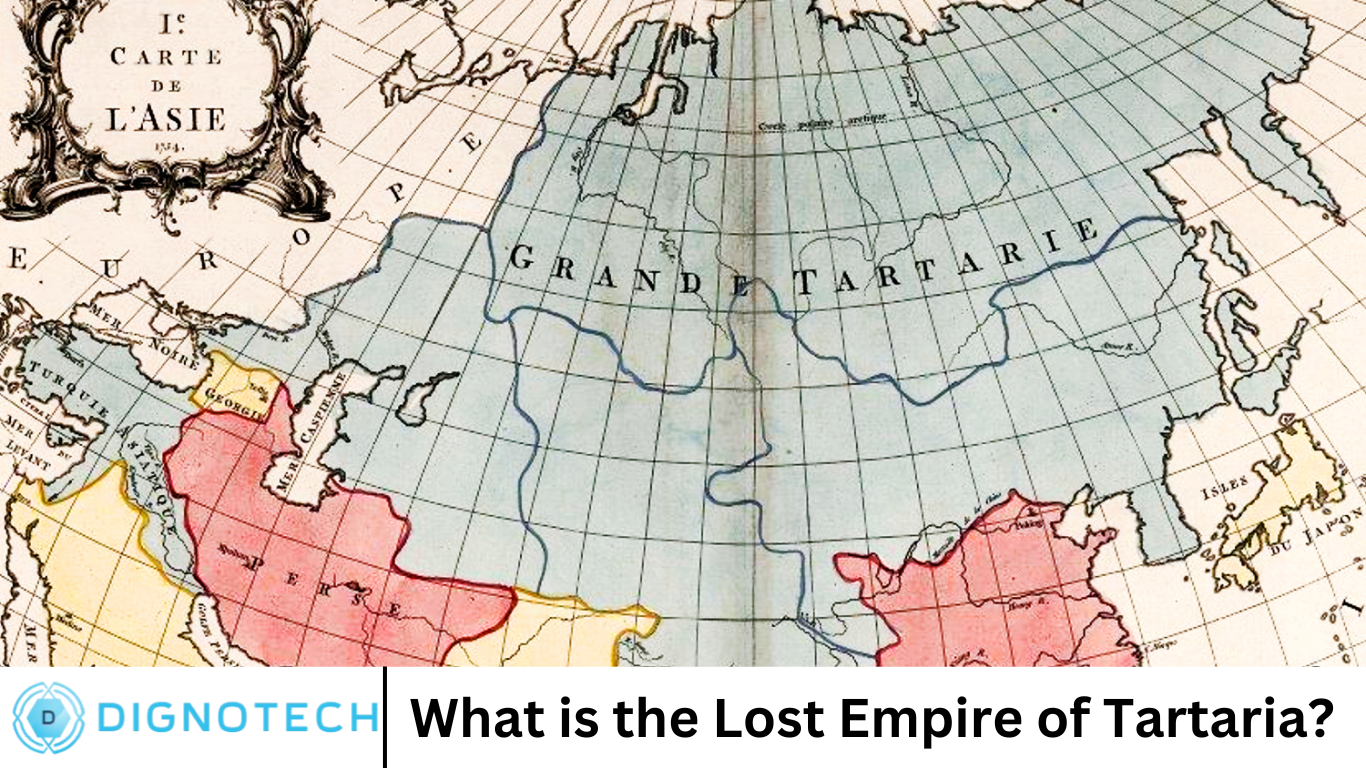What is the Lost Empire of Tartaria?

Hi everyone! How are you all doing? Welcome to dignotech.com! The Lost Empire of Tartaria is a concept that has captured the imagination of many alternative historians, conspiracy theorists, and those interested in uncovering hidden or forgotten aspects of history. According to proponents of this theory, Tartaria was a vast, advanced civilization that once spanned across large parts of Eurasia, including Russia, China, and parts of Europe, and boasted remarkable technology, architecture, and culture. Its rise and fall remain shrouded in mystery, with many claims that its existence has been erased or suppressed by mainstream historians and governments.
The theory surrounding Tartaria is based on a variety of sources, including old maps, obscure texts, architectural anomalies, and supposed evidence of ancient technologies that some believe could not have been developed by known ancient civilizations. While mainstream scholars dismiss these ideas as speculative or unsubstantiated, the Lost Empire of Tartaria continues to intrigue and spark debate.
This article will explore the concept of Tartaria, its origins, the evidence that supports or challenges its existence, and answer frequently asked questions about the topic.
Origins of the Tartaria Theory
The idea of Tartaria as a lost civilization began to gain traction among alternative history enthusiasts and conspiracy theorists in the late 20th and early 21st centuries. It gained particular prominence through online forums, YouTube videos, and websites dedicated to fringe theories about history. The term “Tartaria” itself can be traced back to historical references to Tartary, a name used in medieval Europe to describe a vast, largely unknown region of Asia, stretching from the Russian steppes to parts of China and Mongolia.
Historically, the term “Tartary” was used by European cartographers and explorers in the 16th and 17th centuries to describe regions inhabited by the Tatar people, a group of Turkic-speaking peoples spread across parts of Central Asia and Eastern Europe. The name “Tartaria” was used broadly to describe a vast, uncharted expanse and was not necessarily indicative of a unified empire or political entity. However, the concept of a grand empire stretching across these territories and possessing advanced technologies or cultural sophistication is something that is largely a product of modern reinterpretations of history.
The Claims of the Lost Empire of Tartaria
Proponents of the Tartaria theory claim that the empire was an advanced civilization that was capable of feats far beyond what is commonly accepted by historians. These claims typically focus on three major aspects: architecture, technology, and global influence.
Advanced Architecture
One of the most prominent arguments made by Tartaria enthusiasts is the existence of strange or out-of-place architectural structures found across the world. These structures often have features that proponents believe could not have been built by the civilizations traditionally credited with constructing them. These features include massive, intricate buildings, advanced engineering, and a level of craftsmanship that appears to be far ahead of its time.
For example, many Tartaria theorists point to classical-style buildings, particularly those found in cities like St. Petersburg, Russia, and Washington, D.C., as evidence of Tartarian architecture. They claim that the ornate columns, domes, and facades of these buildings show signs of a lost, sophisticated civilization that had access to superior technology and design principles.
There are also claims about the so-called “World’s Fairs” that took place during the 19th and early 20th centuries. These large-scale expositions showcased technological innovations and architectural achievements from around the world. Tartaria theorists argue that many of the grand structures built for these fairs were not constructed by the countries hosting them but were remnants of the Lost Empire of Tartaria, which had been hidden or destroyed during the fairs.
Advanced Technology
Another claim made by those who support the existence of the Lost Empire of Tartaria is that the civilization possessed advanced technologies far beyond what was known to other ancient cultures. Proponents of this theory suggest that Tartarians had access to free energy, advanced transportation methods (such as airships), and technologies that were later suppressed or forgotten by modern civilizations.
For instance, some enthusiasts point to the construction of large, intricate buildings or cities with supposed high-tech designs as evidence that Tartaria was capable of advanced engineering and energy manipulation. They often cite what they see as mysterious symbols or devices in historical photographs as proof of these lost technologies.
Global Influence
Tartaria proponents often claim that the empire had a far-reaching influence on other ancient civilizations. They believe that Tartarians spread their advanced knowledge and culture across the globe, leaving behind a lasting legacy in the form of architectural styles, technologies, and cultural practices. According to this theory, Tartaria’s influence is evident in places like ancient Egypt, the Americas, and even Europe, with artifacts and structures showing similarities to those found in what is claimed to be the empire’s heartland.
This idea is often bolstered by references to old maps, which some believe depict a unified Tartarian empire stretching across Asia, Europe, and beyond. These maps, they argue, are evidence of a civilization that once held sway over a vast portion of the world, only to be erased from history.
Mainstream Skepticism and Criticism
Despite the intriguing nature of these claims, mainstream historians and archaeologists remain highly skeptical of the existence of a lost empire like Tartaria. There are several reasons for this skepticism, including the lack of concrete evidence and the fact that many of the architectural anomalies and technological wonders cited by Tartaria theorists can be explained by known historical developments.
For instance, much of the architectural evidence put forward by Tartaria enthusiasts can be explained by the widespread use of classical European architectural styles during the 18th and 19th centuries. The grandeur of buildings like those seen in St. Petersburg, Paris, and Washington, D.C., can be attributed to the Neoclassical architectural movement, which drew heavily from ancient Greek and Roman design principles. Similarly, the World’s Fairs were large-scale international expositions that showcased modern achievements and innovations, not remnants of a lost civilization.
Many of the old maps cited by Tartaria theorists are also not considered to be reliable evidence of a global empire. These maps were often drawn based on incomplete knowledge of the world, and they reflect the cartographic practices of the time, which did not always accurately depict the geography of distant lands.
Furthermore, many of the technologies and ideas attributed to Tartaria can be explained through the lens of known historical progressions. The development of steam power, electricity, and other technologies during the 18th and 19th centuries was well-documented, and there is no concrete evidence to suggest that any advanced, lost civilization was involved.
The Role of Suppression and Erasure
One of the key arguments put forward by supporters of the Tartaria theory is that the civilization’s existence was deliberately suppressed or erased by modern powers. According to this view, the knowledge and technologies of Tartaria posed a threat to the established order, and as such, governments, historians, and elites have worked to suppress the truth.
This theory aligns with many other conspiracy theories that suggest a deliberate cover-up of hidden knowledge, often involving secret societies, global elites, or shadow governments. The idea of historical erasure is not new—there are many examples throughout history where the true nature of events or civilizations has been obscured or rewritten. However, the claim that Tartaria was deliberately erased from history is speculative, and there is little concrete evidence to support it.
Frequently Asked Question
Was the Lost Empire of Tartaria a real civilization?
The existence of the Lost Empire of Tartaria is not supported by mainstream historians or archaeologists. While there are references to Tartary in historical maps and texts, the idea of a vast, advanced empire spanning Eurasia is largely speculative and not backed by concrete evidence.
Why do some people believe in the Lost Empire of Tartaria?
Supporters of the Tartaria theory believe that evidence of an advanced civilization has been deliberately suppressed or erased. They point to architectural anomalies, old maps, and unexplainable technologies as proof of Tartaria’s existence and its global influence.
What evidence is there for the existence of Tartaria?
The evidence put forward by Tartaria enthusiasts primarily includes old maps, photographs of buildings, and claims of advanced technologies. However, much of this evidence can be explained by known historical developments and does not provide concrete proof of a lost empire.
Did the Lost Empire of Tartaria have advanced technology?
Some proponents claim that Tartaria had access to advanced technologies, such as free energy and airships. However, there is no solid evidence to support these claims, and many of the technologies attributed to Tartaria can be explained by other means.
What happened to the Lost Empire of Tartaria?
According to Tartaria theorists, the empire either fell due to a cataclysmic event or was deliberately erased from history by modern powers. However, there is no historical evidence to support these theories, and the collapse of such an empire remains speculative.
Are there any mainstream scholars who support the idea of Tartaria?
No mainstream historians or archaeologists support the idea of the Lost Empire of Tartaria. Most scholars consider it to be a fringe theory without evidence. The term “Tartary” referred to a broad region and not a specific empire.
How does Tartaria relate to conspiracy theories?
The theory of Tartaria is often associated with broader conspiracy theories about hidden histories, global elites, and secret societies. Proponents argue that the truth about Tartaria has been deliberately covered up for political or economic reasons.
Conclusion
The Lost Empire of Tartaria remains an intriguing and controversial topic, with many people drawn to its mystery and the potential for uncovering a hidden chapter of human history. However, while the theory offers a captivating narrative, it is not supported by concrete evidence and is widely dismissed by mainstream historians and archaeologists. Whether or not Tartaria ever existed as a vast, advanced civilization is still a matter of speculation, but for now, the Lost Empire remains just that—lost in the annals of alternative history.




